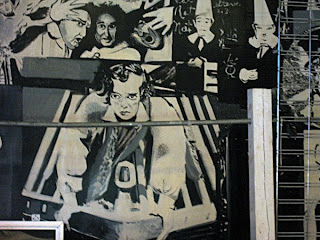I, for one, intend to celebrate with a marathon of Buster's movies, a couple games of cards, and possibly a Buster-related purchase on eBay (what better day to treat myself to a birthday wish, since I can't treat Buster to one?).
For anyone interested in watching a new or different sort of a movie in celebration and commemoration of Buster Keaton, I recommend viewing Tarsem's The Fall, starring Lee Pace and newcomer Catinca Untaru.
The Fall is a beautifully filmed and acted story about Roy (Pace), a stuntman from the silent era who has become paralyzed from the waist down due to a stunt gone wrong. His heartbreak over the loss of his love compounded with his new handicap has led him into a spiral of suicidal depression. Enter Alexandria (Untaru), a young girl wandering the hospital with a broken arm. Roy captures her attention with a fantastical story that is an allegory for his own life. As Alexandria urges the story forward, however, it becomes uniquely theirs. In her innocence, however, Alexandria doesn't realize that Roy is using her interest in him and their story for ulterior motives.
It is a well-acted, charming little movie with stunning visuals. The film is a nice tribute to the silent era of film making, and I would recommend viewing it on that alone. I recommend it here, in particular, because Buster Keaton also makes a cameo of sorts.
I've got to get to celebrating, so that's all for today.
HAPPY BIRTHDAY, BUSTER KEATON!






















